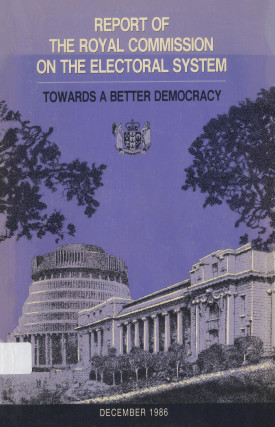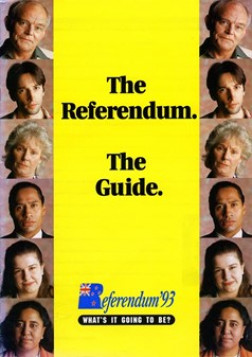
In 1985, the Labour Government established a Royal Commission to hold a wide-ranging inquiry into New Zealand’s electoral system.
When the Royal Commission on the Electoral System released its report the following year, it recommended changing New Zealand’s electoral system to Mixed Member Proportional (MMP).
Under MMP, voters would have two votes, one for a party and one for an electorate candidate. The party vote would determine the share of seats parties had in Parliament.
Why MMP?
The Commission argued that MMP was a fairer electoral system that would result in a more effective Parliament and provide better representation for Māori and minority groups.
It said MMP should only be introduced if there was public understanding and support for the change and it recommended a referendum on the adoption of MMP.
Report of the Royal Commission on the Electoral System
The 1992 referendum
National went into the 1990 election with a policy to hold a referendum on electoral matters. It was elected to Government and held an indicative referendum on the electoral system in 1992.
There were two parts to the referendum. Part A asked voters to choose between retaining FPP or changing the voting system. 84.7% voted for change.
Part B asked voters to choose between four alternative systems and a clear majority opted for MMP.
17.4% voted for Single Transferable Vote, 5.5% for Supplementary Member (SM), 70.5% for MMP and 6.6% for Preferential Voting (PV).
The referendum was held as a stand-alone poll at voting places, rather than by a postal vote, and the turnout was 55%.
1993 – New Zealand votes for change

A binding referendum was held alongside the 1993 General Election asking voters to choose between FPP and MMP.
If there was a vote for change, an Electoral Bill would come into force introducing MMP. Parties would be elected to Parliament if they won 5% of the party vote or at least one electorate seat. The number of MPs in Parliament would increase from 99 to 120.
Public information campaigns were funded by the Government for both the 1992 and 1993 referendums to inform voters about their choices.
Two lobby groups campaigned heavily ahead of the 1993 referendum, the Electoral Reform Coalition pushing for MMP, and the Campaign for Better Government for the status quo.
The vote was for change. 46.1% voted to retain FPP and 53.9% voted to change to MMP.
Watch one of the official advertisements explaining the choice for voters. The video is only to be used for study and non-commercial purposes.
